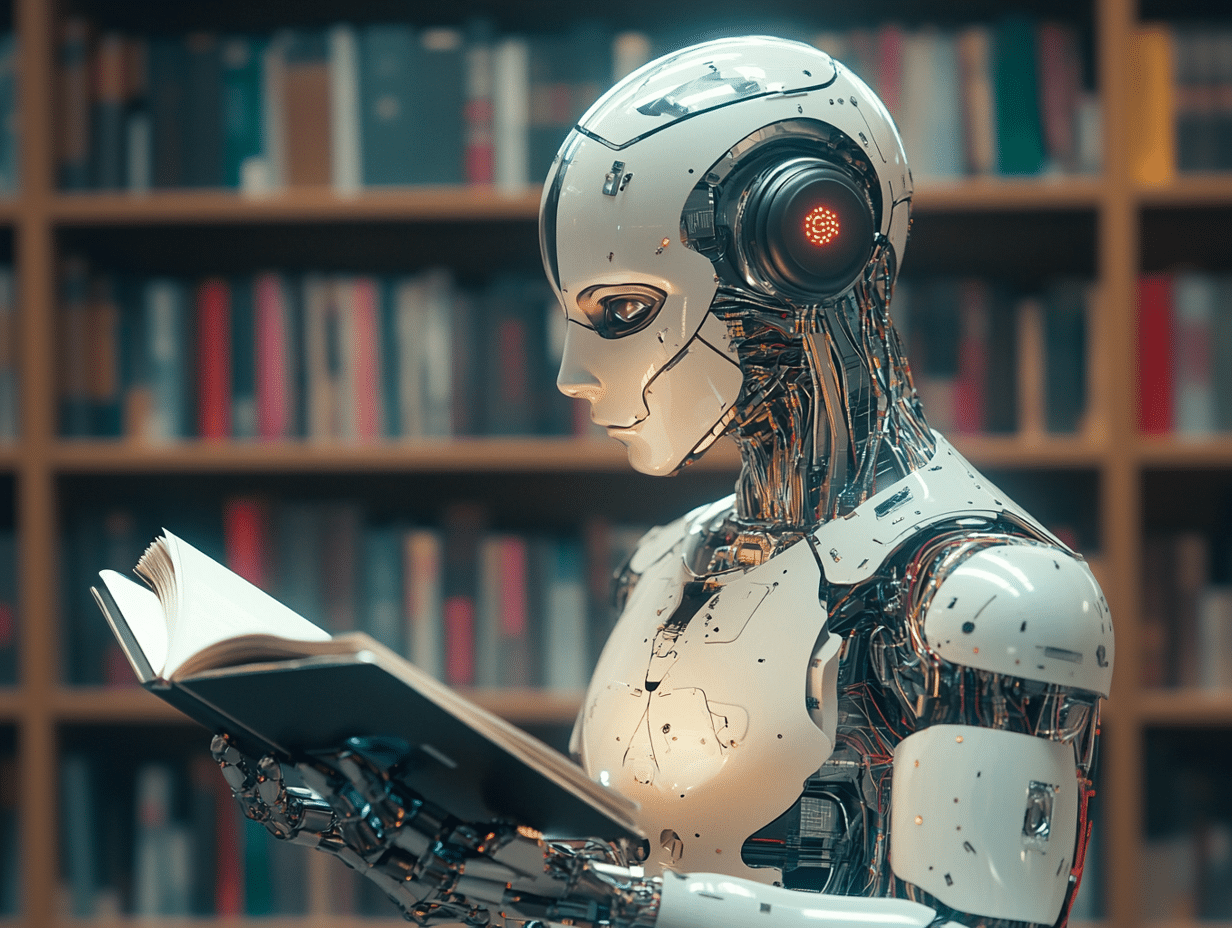From its inception in the theoretical halls of mid-20th century academia to the sophisticated, AI-driven algorithms of today, the evolution of NLP has not only advanced our understanding of language processing but also pushed the frontiers of what’s possible, transforming how we interact with technology and how it enhances our daily lives.
This chronicle of NLP past, present and future is not just a history of a technology but a reflection of our evolving relationship with machines, marked by remarkable achievements and the promise of even more extraordinary breakthroughs in the years to come as we bridge the communicative divide between humans and machines.
1950s – The Beginnings and Theoretical Foundations
The 1950s laid the groundwork for NLP with the development of early computers and the Turing Test, proposed by Alan Turing in 1950, which considered the possibility of machines understanding and responding to human language.
In 1957, Noam Chomsky’s linguistic theory, which introduced the concept of a generative grammar, provided a framework for understanding language structure and influenced early NLP models.
1960s – Early NLP Systems and Rule-Based Approaches
The 1960s saw the creation of the first NLP applications. One of the earliest, ELIZA (created by Joseph Weizenbaum in 1966), simulated conversation by pattern matching user input to scripted responses.
The focus was on rule-based methods, where linguists manually wrote rules for the computer to follow in processing language.
1970s – Expansion and the Limits of Rule-Based Systems
This era saw the development of more sophisticated systems, such as SHRDLU by Terry Winograd, which could understand and respond to natural language in a restricted “blocks world” environment.
However, the limitations of rule-based systems became apparent, as they struggled with understanding the complexity and variability of human language.
1980s – The Rise of Statistical Methods
The 1980s marked a shift towards statistical methods in NLP. This approach used algorithms to learn from actual language data, rather than relying solely on handcrafted rules.
This shift was partly fueled by the increasing availability of digital text for analysis.
1990s – Machine Learning and Large Corpora
The 1990s introduced machine learning techniques into NLP, allowing systems to automatically learn and improve from experience. The development of large text corpora, like the Penn Treebank, and the rise of the internet provided vast amounts of data for training NLP systems.
2000s – Sophistication and Integration
The 2000s saw NLP becoming more sophisticated and integrated into practical applications like translation services, search engines, and voice-activated assistants.
Algorithms such as Support Vector Machines (SVMs) and Hidden Markov Models (HMMs) were commonly used.
2010s – Deep Learning and Neural Networks
The advent of deep learning and neural networks brought significant advancements in NLP. Models like Long Short-Term Memory (LSTM) networks improved language modeling and understanding.
Word2vec was introduced in 2013 by a team of researchers led by Tomas Mikolov at Google. Word2Vec is a pivotal technique utilizing deep learning and neural networks. Designed to derive vector representations of words, Word2Vec transformed the computational understanding of linguistic context and semantics. It harnessed large corpora to train models capable of discerning synonymous terms and predicting word completion in sentences. By representing words as unique vectors that encode both their meaning and contextual usage, Word2Vec allowed for the quantification of semantic similarity, thereby bringing a nuanced mathematical approach to the interpretation of language within NLP.
The Transformer architecture was first introduced in the paper “Attention is All You Need” by Vaswani et al. in 2017. This architecture became the foundation for many subsequent models, but one of the most notable pre-BERT models that used the Transformer architecture was OpenAI’s GPT (Generative Pretrained Transformer), released in June 2018. GPT was pivotal as it utilized the Transformer’s self-attention mechanisms to produce a model that could be fine-tuned for a variety of NLP tasks. BERT (Bidirectional Encoder Representations from Transformers), which was released by Google in October 2018, extended the Transformer’s architecture by focusing on bidirectional context, becoming one of the most influential models in NLP.
BERT (Bidirectional Encoder Representations from Transformers), which was released by Google in October 2018, extended the Transformer’s architecture by focusing on bidirectional context, becoming one of the most influential models in NLP. BERT’s novel approach involved training language models to understand the context of a word based on its surrounding text, rather than in isolation. This methodology enabled the model to grasp the full complexity and nuance of human language, encompassing the intricacies of context, intent, and semantic relationships. By processing words in relation to all the other words in a sentence (bidirectionally), rather than one-directionally, BERT was able to capture subtleties that previous models may have missed. Consequently, it set a new standard for tasks such as question answering, sentiment analysis, and language inference, fundamentally altering the landscape of machine learning in language understanding and setting the path for future advancements in AI language models.
2020s and Beyond – Continued Advancements and Integration
In the 2020s, the field of natural language processing (NLP) witnessed a paradigm shift with the advent of sophisticated generative models, particularly Generative Pretrained Transformers (GPT). OpenAI’s introduction of GPT-3 in 2020, with its 175 billion parameters, became a landmark in AI for its ability to generate human-like text, answering questions, summarizing passages, and even creating content from brief prompts with a surprising degree of fluency and coherence.
This shift fundamentally changed how machines could generate and understand language, allowing for an unprecedented level of interaction between AI systems and human users. The emergence and rapid development of these powerful models have propelled a multitude of applications across industries, from automated customer service chatbots to advanced content creation tools, setting a transformative trajectory for NLP technology in the decade.
The 2020s also saw a focus on refining NLP models for better efficiency and clarity, with advancements designed to manage multilingual and diverse datasets. This prioritizes streamlined computation and model transparency, making AI tools accessible across languages and cultures. Additionally, NLP’s convergence with AI domains such as computer vision enables sophisticated interaction with visual data, while reinforcement learning integration is enhancing conversational AI’s adaptive learning capabilities. These steps mark significant progress in versatile and intelligent language processing technologies.
Future Trends and Directions in NLP
Throughout its history, NLP has evolved from simple, rule-based models to complex systems using advanced machine learning techniques, continually pushing the boundaries of how machines understand and interact with human language. The future of NLP promises even more exciting developments, as it becomes increasingly integrated into various aspects of technology and daily life.
The next decade is poised to witness significant transformations in how NLP technologies understand and interact with human language. Here are some key future trends and directions in NLP:
Advances in Unsupervised and Self-Supervised Learning
Beyond Supervised Learning: While supervised learning has been dominant in NLP, the future will see a shift towards more unsupervised and self-supervised learning approaches. These methods, which do not rely on labeled data, are crucial for scaling NLP applications as they can learn from the vast amounts of unlabeled text available on the internet.
Innovations in Language Understanding: Unsupervised and self-supervised learning are expected to drive innovations in language understanding, enabling models to grasp more nuanced and complex aspects of language, including idioms, humor, and cultural references.
The Growing Importance of Transfer Learning in NLP
Adaptability and Efficiency: Transfer learning, where a model developed for one task is adapted for another, is becoming increasingly important in NLP. This approach allows for more adaptable and efficient model training, as foundational models can be fine-tuned for specific tasks or languages.
Cross-Domain and Cross-Linguistic Applications: The future will likely see an expansion of transfer learning applications, not just across different tasks but also across domains and languages, enabling more versatile and globally applicable NLP models.
Predictions for NLP Advancements in the Next Decade
Integration of Multimodal Data: NLP is expected to integrate more with other data types, such as visual and auditory data, leading to more comprehensive multimodal AI systems. This could revolutionize areas like sentiment analysis, where visual cues can be as informative as textual information.
Enhanced Conversational AI: Advancements in NLP will lead to more sophisticated conversational agents capable of more natural, context-aware, and nuanced interactions. This will not only enhance customer service applications but also create new possibilities in personal assistants and therapy bots.
Ethical AI and Bias Mitigation: As NLP technologies become more pervasive, there will be a growing focus on ethical AI. This includes developing methods to detect and mitigate biases in language models and ensuring that NLP applications are fair and responsible.
Real-Time Language Processing: Improvements in computational efficiency and model optimization will enable more real-time language processing applications, vital for tasks like live translation and real-time content moderation.
Personalized and Adaptive NLP: Future NLP systems will become more personalized and adaptive, capable of tailoring their responses and interactions based on individual user preferences, history, and context.
Broader Accessibility and Inclusivity: Advances in NLP will also focus on making technology more accessible and inclusive, with enhanced support for a wider range of languages and dialects, as well as for users with disabilities.
A Smarter and More Ethical Future
The future of NLP is marked by a shift towards more advanced learning techniques, greater integration with other forms of data and AI, and a heightened emphasis on ethical and responsible use. These trends point towards an exciting and transformative future for NLP, with potential impacts across a myriad of industries and aspects of daily life.




